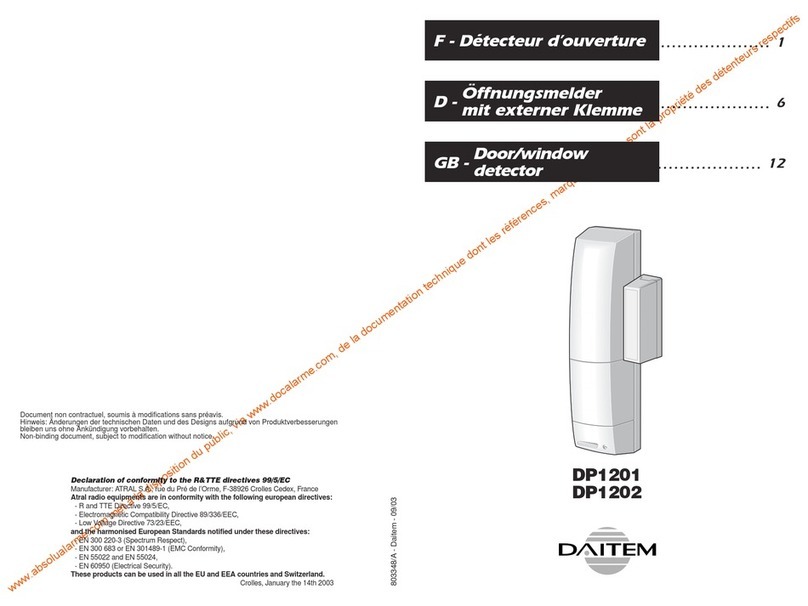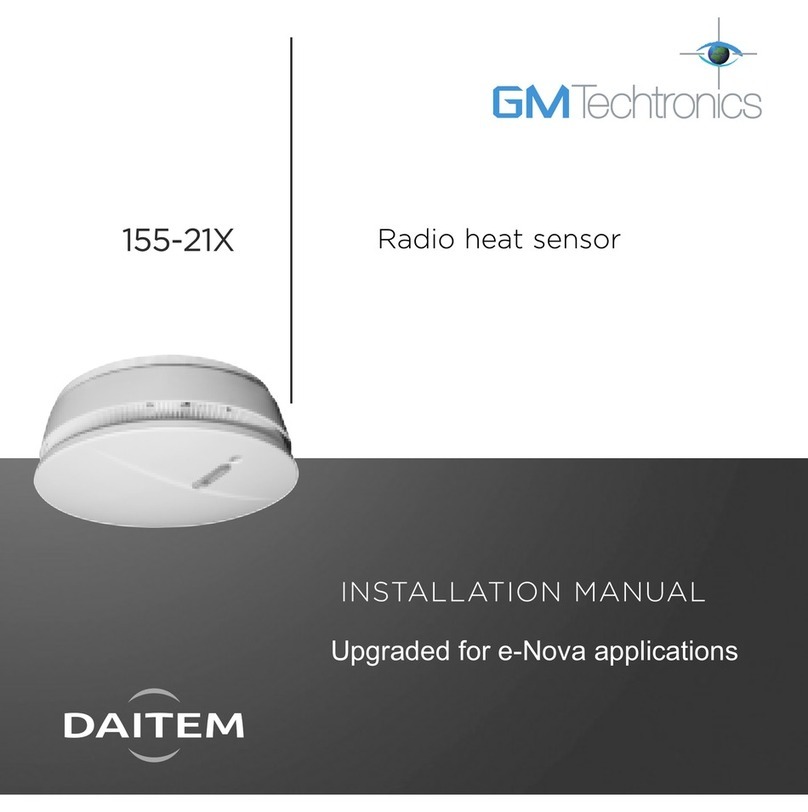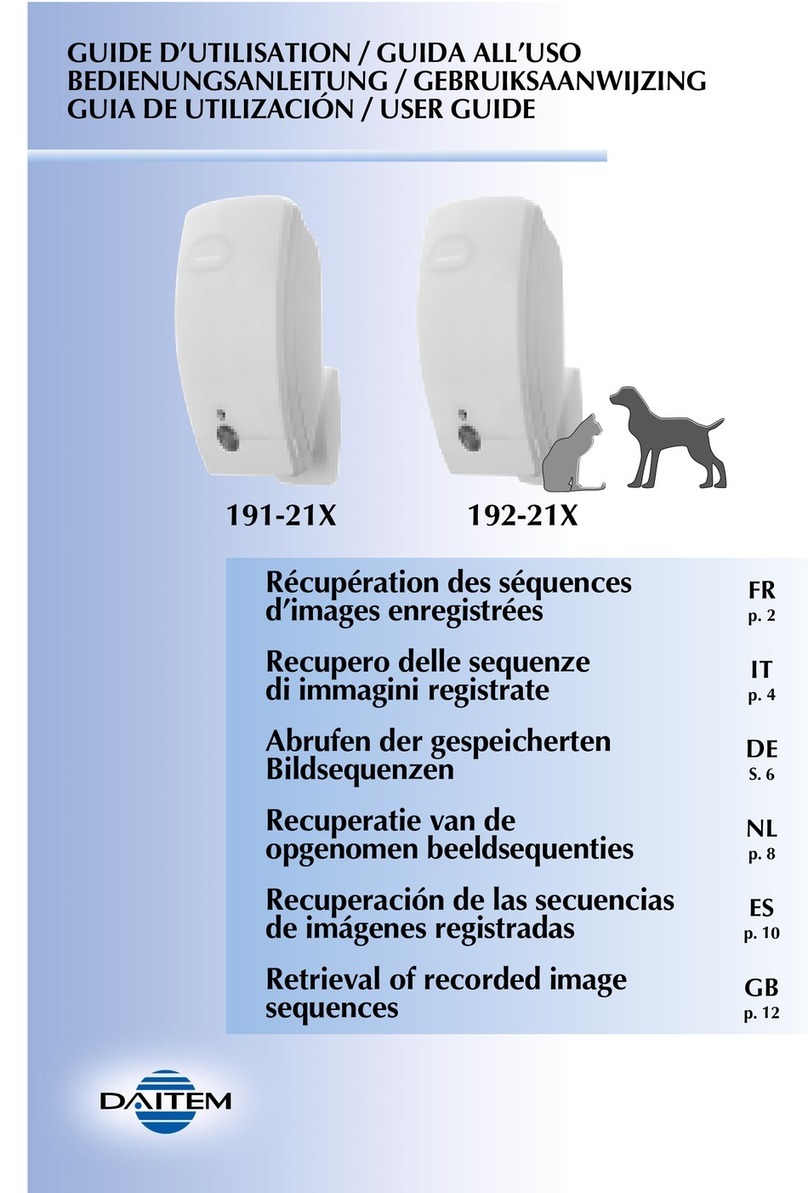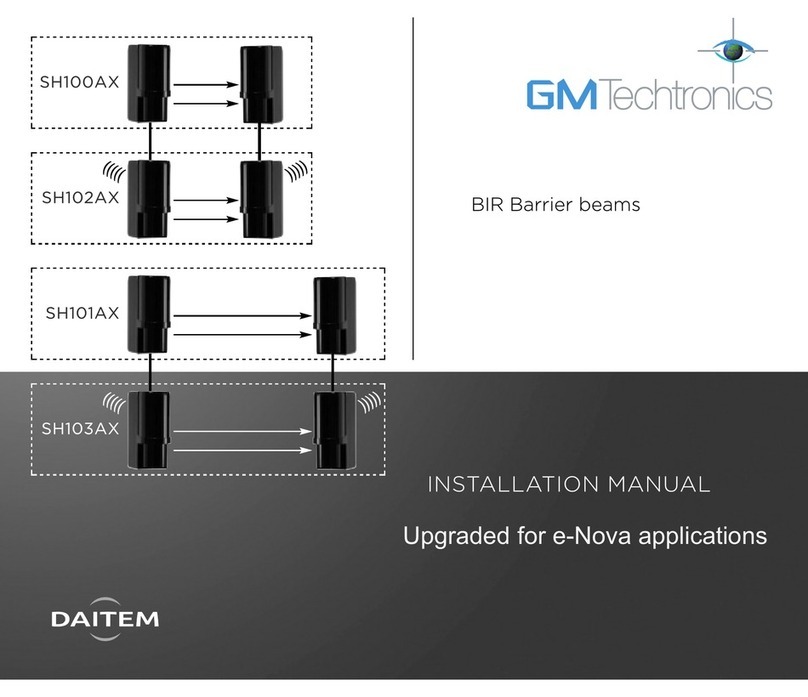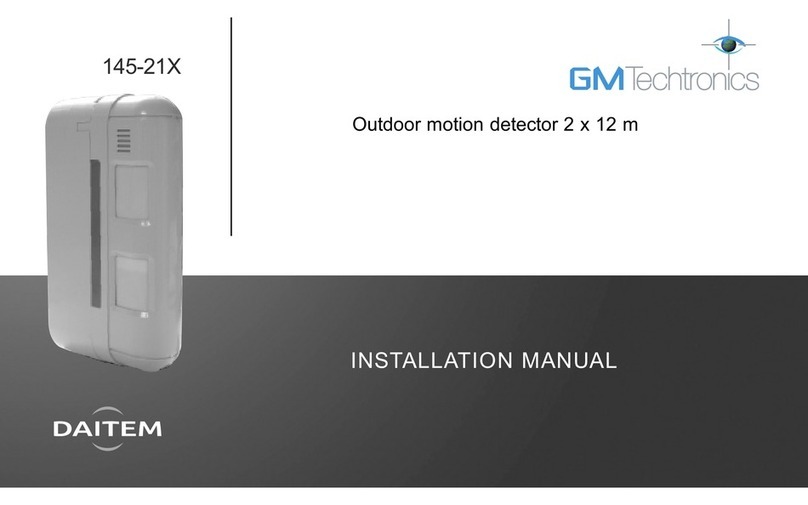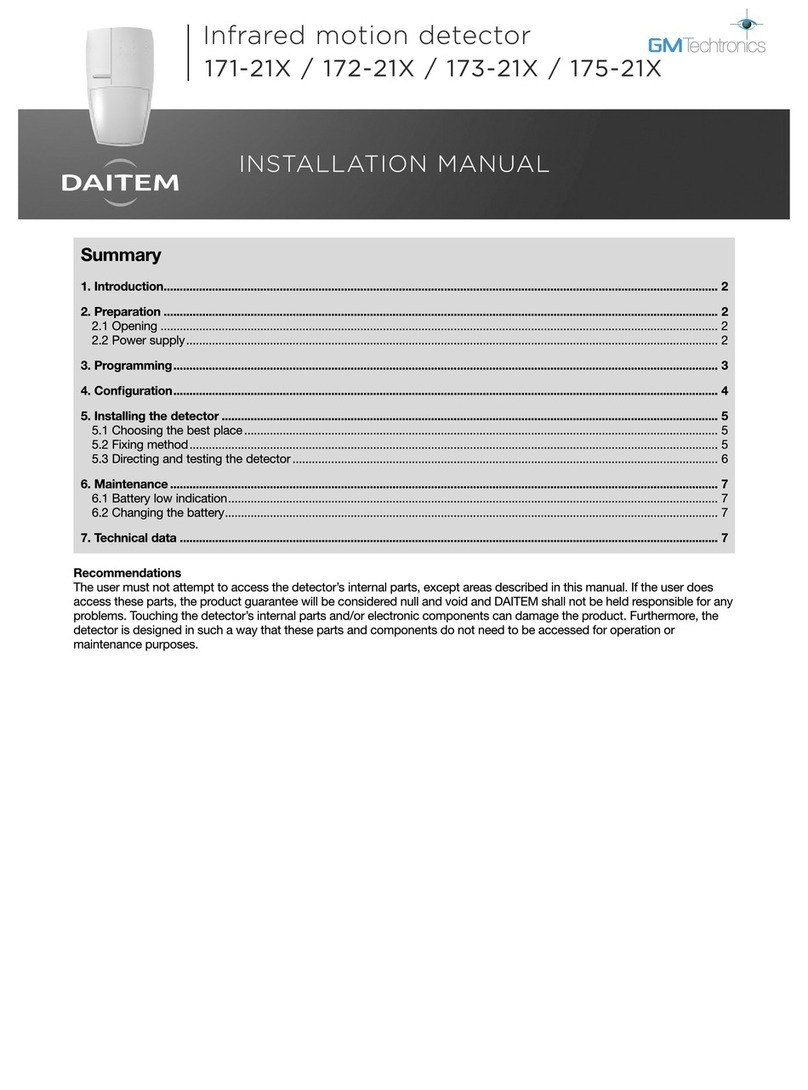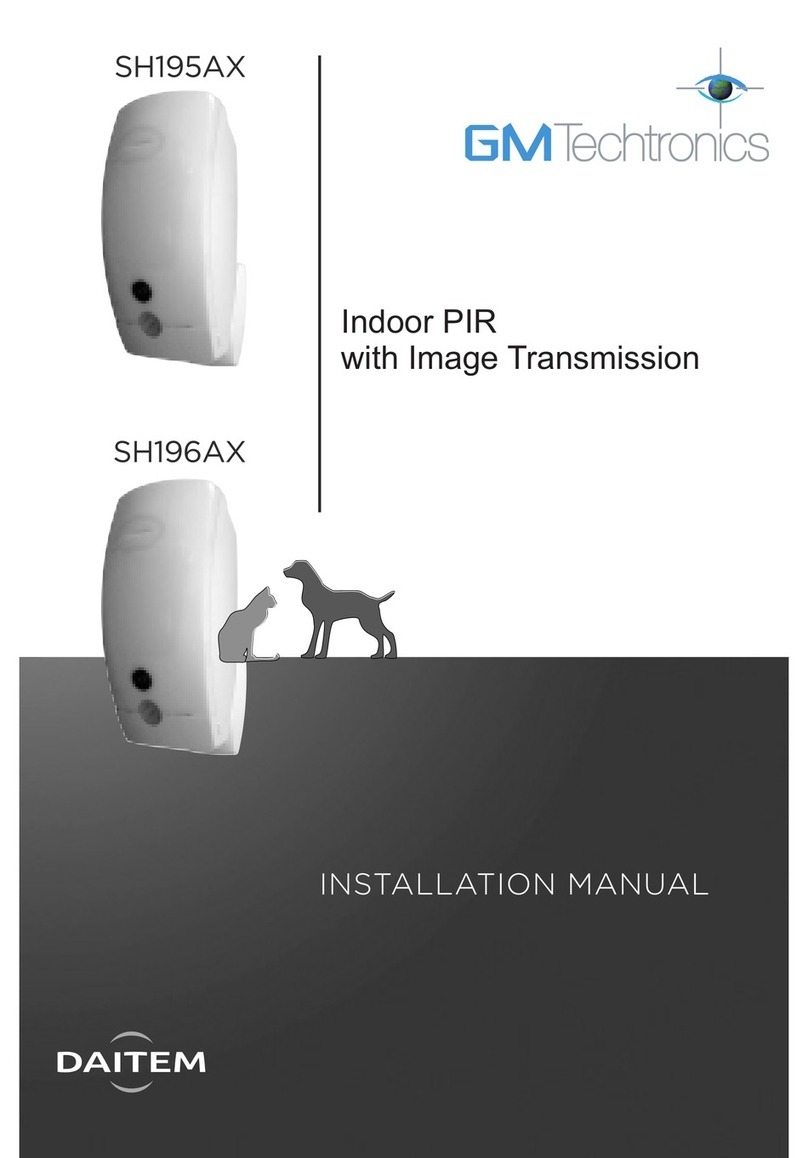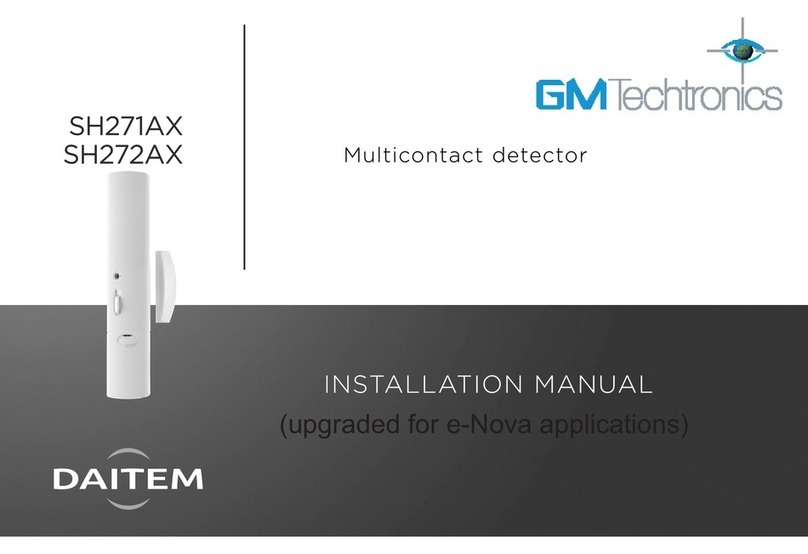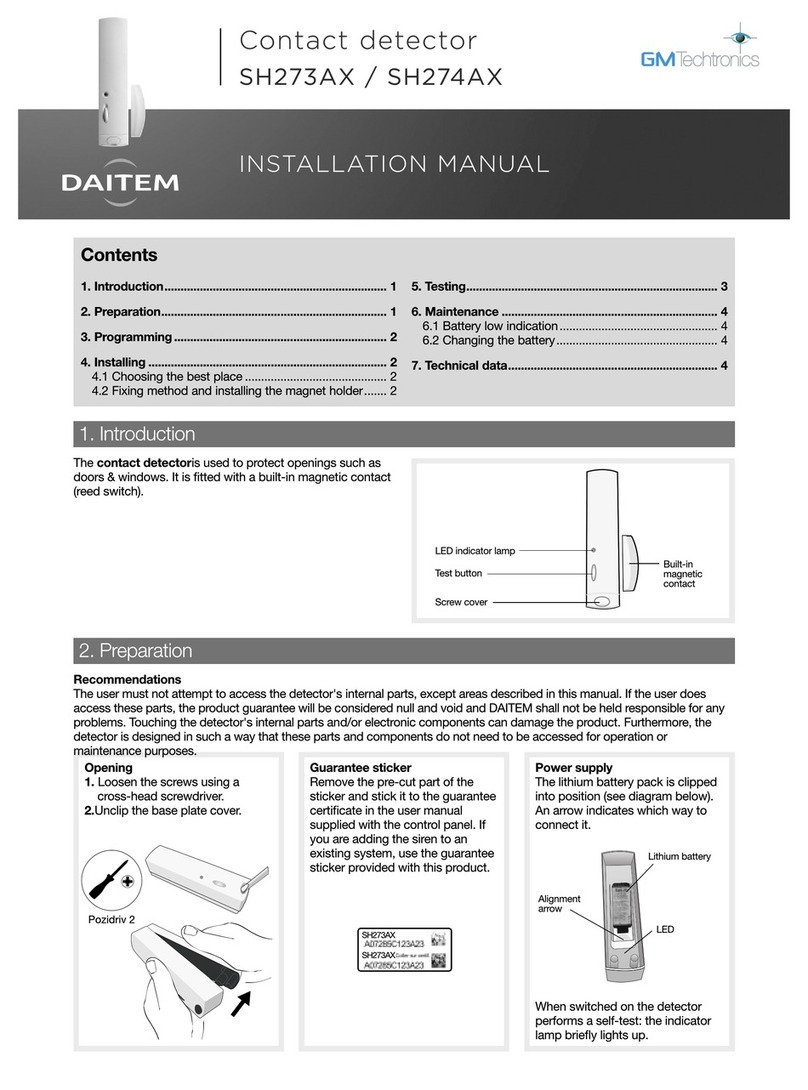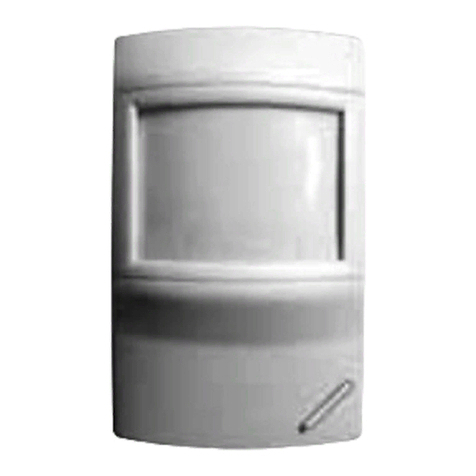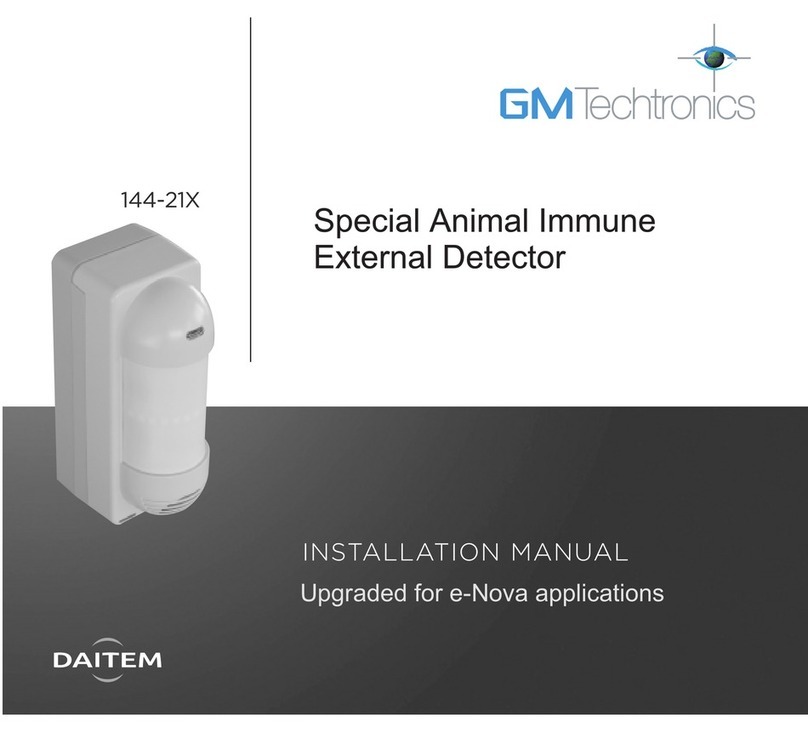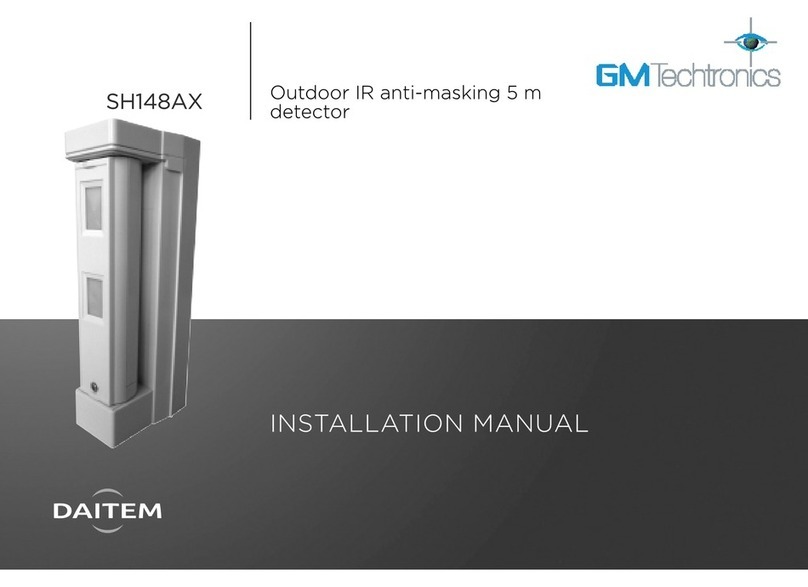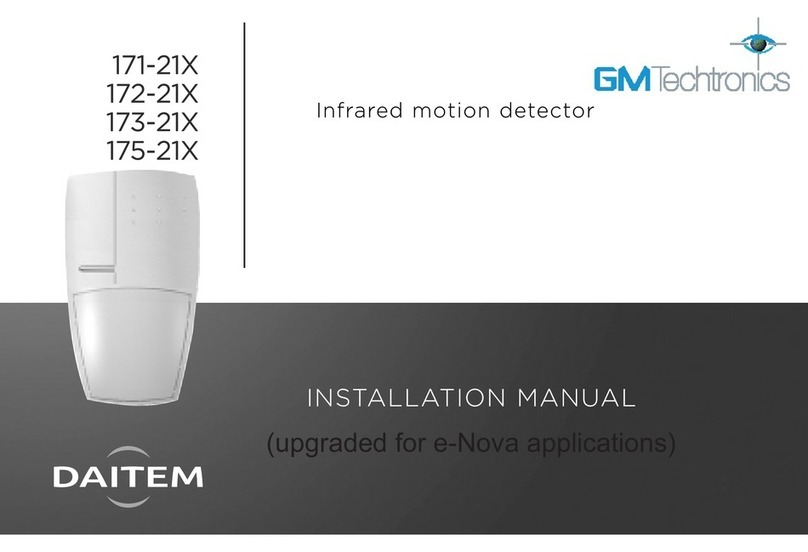8. Maintenance
8.1 Battery low indication
The control panel indicates when the multicontact detector’s
battery is low.
To check whether there is a problem with the detector
battery, press on the detector’s test button.
Recommendations
The user must not attempt to access the detector's internal
parts, except areas described in this manual. f the user does
access these parts, the product guarantee will be
considered null and void and DA TEM shall not be held
responsible for any problems. Touching the detector's
internal parts and/or electronic components can damage the
product. Furthermore, the detector is designed in such a
way that these parts and components do not need to be
accessed for operation or maintenance purposes.
I PORTANT: if the test LED indicator
lamp no longer lights up, the lithium
battery should be replaced.
9. Technical data
Specifications ulticontact detector
Built-in magnetic contact 1
Terminal block for external contact 1
Environment building interior
Power supply DA TEM 3.6 V lithium battery
Battery life 5 years in normal conditions of use
Average humidity rate 5% to 75% without condensation
at 25°C
Radio links TwinBand®400/800 MHz
Test button battery and detection
LED ndicator lamp 1
Operating temperature -10 °C to +55 °C
Anti-tamper & protection • against opening and removal
• against loop cutting
Degrees of mechanical protection P 31/ K 04
Dimensions L x W x H 138 x 26 x 30 mm
Weight (with battery) 70 g
DECLARATION OF CONFOR ITY
Manufacturer: Hager Security SAS
Address: F-38926 Crolles Cedex - France
Product type: ulticontact detector
Trade mark: Daitem
We declare under our sole responsibility that the product to which this
declaration relates is compliant with the essential requirements of the
following directives:
• R&TTE Directive: 99/5/EEC
• Low voltage directive: 2006/95/EC
• Directive ROHS: 2002/95/EC
in compliance with the following harmonised European standards:
This product can be used in all EU, EEA Countries
and Switzerland.
Crolles, 02.01.2013 Signature:
Patrick Bernard
Director of Research and Development
Products code SH271AX SH272AX
EN 300 220-2 V2.3.1 X X
EN 55022 & 55024 (2002) X X
EN 50130-4 (95) + A1 (98) + A2 (2002) X X
EN 60950 (2006) X X
EN 301 489-1 V1.8.1 X X
GB
13
Non-contractual document, may be modified without prior
notice.
